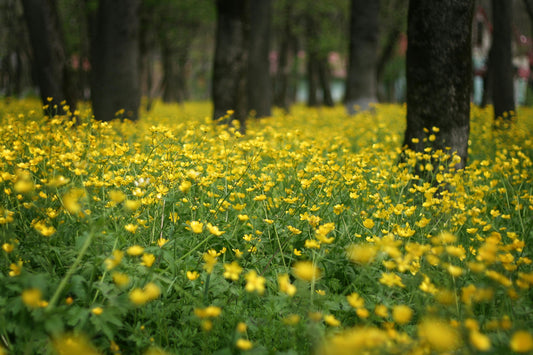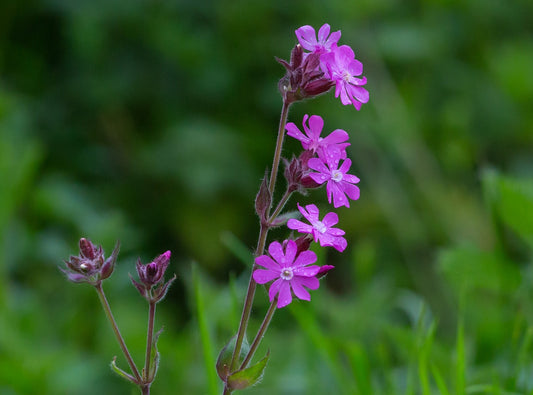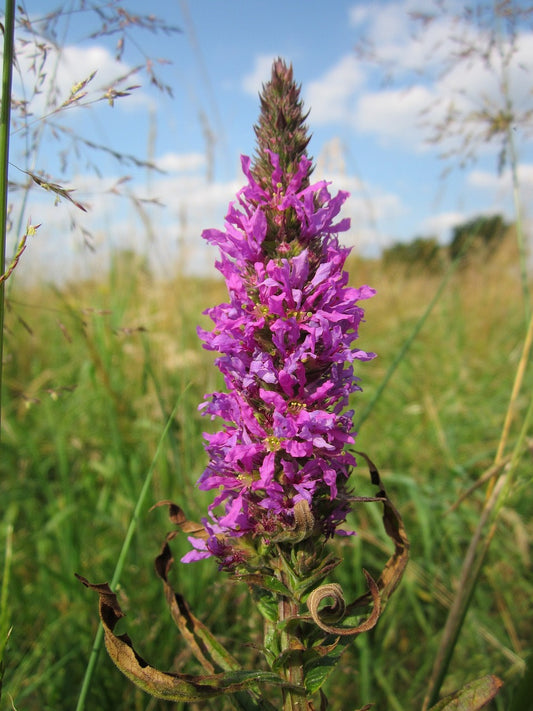
How to Sow Night-Flowering Catchfly: A Guide to Evening Garden Beauty
This guide will help you sow Night-Flowering Catchfly (Silene noctiflora) successfully, ensuring your garden is graced with its delicate, fragrant blooms each evening.
Introduction to Night-Flowering Catchfly
Night-Flowering Catchfly, also known as Silene noctiflora, is a charming addition to any garden, renowned for its subtle beauty and sweet evening scent. This biennial or short-lived perennial is perfect for those who appreciate nocturnal blooms.
Why Grow Night-Flowering Catchfly?
Cultivating Night-Flowering Catchfly is a rewarding endeavour for several reasons:
- Fragrance: The flowers emit a delightful fragrance at dusk, attracting moths and evening pollinators.
- Aesthetic Appeal: With its star-shaped white flowers, it adds a unique charm to night gardens.
- Low Maintenance: It's a hardy plant that doesn't require intensive care.
When to Sow Night-Flowering Catchfly
Timing is crucial for successful germination. The best periods to sow Night-Flowering Catchfly seeds are:
- Spring: After the last frost, typically between March and May.
- Autumn: Early autumn sowing allows the plants to establish before winter, ensuring robust growth in the spring.
Choosing the Right Location
Night-Flowering Catchfly thrives in well-drained soil and a sunny position. Consider the following when selecting a spot:
- Soil Type: Preferably sandy or loamy soil with good drainage.
- Sunlight: Full sun to partial shade. The plant needs adequate sunlight during the day to prepare for its evening display.
Preparing the Soil
Proper soil preparation sets the stage for healthy growth. Follow these steps:
- Weeding: Remove any weeds from the planting area.
- Soil Amendment: Mix in compost or well-rotted manure to enrich the soil.
- Raking: Ensure the soil surface is smooth and level for sowing.
Sowing the Seeds
Now that the soil is ready, it’s time to sow the seeds. Here’s how:
- Scatter Seeds: Evenly scatter the seeds over the prepared soil.
- Cover Lightly: Gently cover the seeds with a thin layer of soil or fine compost.
- Watering: Water lightly to keep the soil moist but not waterlogged.
Caring for Your Night-Flowering Catchfly
Once sown, maintaining the right conditions is essential for growth:
- Watering: Keep the soil consistently moist, especially during dry spells.
- Thinning: Once seedlings emerge, thin them to about 15-20cm apart to prevent overcrowding.
- Mulching: Apply a thin layer of mulch to retain soil moisture and suppress weeds.
Common Problems and Solutions
While Night-Flowering Catchfly is relatively trouble-free, watch out for these issues:
- Pests: Aphids and caterpillars can be problematic. Use natural predators or neem oil as a remedy.
- Disease: Overly wet conditions can lead to root rot. Ensure good drainage and avoid overwatering.
When to Expect Blooms
Patience is key. Night-Flowering Catchfly typically blooms from mid-summer to early autumn, providing a delightful evening spectacle. The blooms open in the late afternoon and release their fragrance into the night.
Conclusion
Growing Night-Flowering Catchfly is a delightful experience that rewards you with evening beauty and fragrance. By following these steps, you can enjoy this charming plant in your garden, creating a serene and inviting nocturnal landscape. Happy gardening!
For more gardening tips and detailed guides, stay tuned to our blog.




